Photographing Meteor Showers
Meteor showers can produce one of the most awe-inspiring displays in the night sky. They are created when the earth passes through dust particles left behind by a comet or asteroid. When the dust particles hit the atmosphere at great speeds, they burn up and briefly produce spectacular fireballs in the sky.
A list of meteor showers can be found at Meteor Shower Calendar. The next big meteor shower is the Perseids, which will peak on the mornings of August 11, 12 and 13 (with the night of August 12-13 likely to have the largest number of meteors). There will be no moon out to obscure the meteors on these dates, so as long as there are clear skies, it will be a great time to photograph!
Equipment
When shooting in low light, it helps to have a newer digital camera that is rated well for low-light ISO performance. It’s also preferable to use a lens with a very wide aperture that can let in a lot of light. When shooting meteors, I recommend using a very wide angle lens, like 14mm, so that you are able to capture a large portion of the sky. You’ll also need a sturdy tripod when shooting at night. I provide detailed information on equipment I recommend for night photography at http://www.gcollier.com/gear/.
Camera Settings
When shooting meteors, you’ll usually want to use the widest aperture on your lens, such as f2.8. You can calculate your exposure time using the rule of 500. Simply take 500 divided by the focal length of your lens to get the number of seconds to expose the shot. For example, if you shoot with a 20mm lens, take 500/20 = 25 seconds. I recommend using ISO 1600. If you use a higher ISO, it’s possible that you’ll overexpose a bright meteor. Lower ISOs may leave your images too underexposed.
Taking the Shots
To maximize your chances of capturing a bright meteor in an image, you should take repeated exposures throughout the night and hope that a large meteor passes through the shot during one or more of the exposures. Unless your camera has a built-in interval timer, this requires a remote shutter release or intervalometer. It may also require extra batteries, as even the best batteries die within 2-5 hours. If you purchase a battery grip, you can add one or two additional batteries to your camera.
All meteors in a shower originate from a specific area of the sky, which is known as the radiant. The meteors will not necessarily appear in this part of the sky, but they will all point back towards the radiant. Meteor showers are almost always named after the constellation where their radiant is located. If you locate this constellation in the sky, you’ll know where all meteors will radiate from. I’ve found that pointing your camera about 90 degrees away from the radiant can maximize your chances of capturing long meteor trails.
Post Processing
Even during active meteor showers, it’s unlikely that you’ll capture more than two meteors in a single frame. While a shot with one or two meteors can be impressive, it doesn’t quite capture the essence of a meteor shower when hundreds of meteors can streak across the sky in a single night. Therefore, many night photographers like to combine every meteor they capture over the course of the night onto a single image.
Accomplishing this is rather straightforward for those experienced with Photoshop. Simply stack every image you took that has a meteor in it onto one file in Photoshop. Then, on all but the very bottom layer, mask out everything except for the individual meteors.
If you do combine all of the meteors into a single image, you’ll find that not all meteors point back to the exact same spot in the sky. This is because the radiant will be moving across the sky during the course of the night. If you prefer to have all of your meteors pointing back to the same spot, you can approximate where the radiant is in the image on the bottom layer in Photoshop. Then, rotate the other layers until the meteors are all pointing back to that spot.
The only thing remaining is for you to go out there and get some great shots of the next meteor shower.

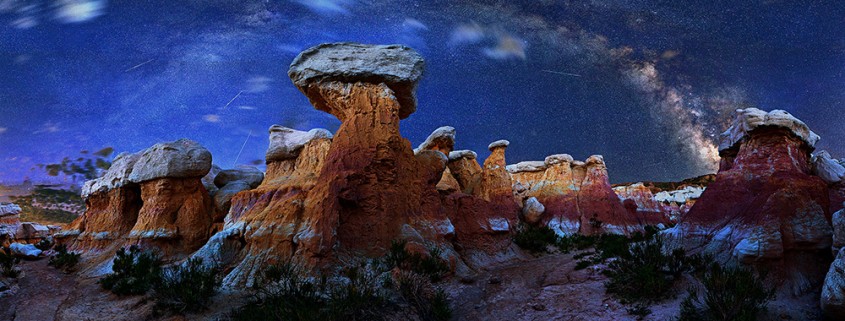
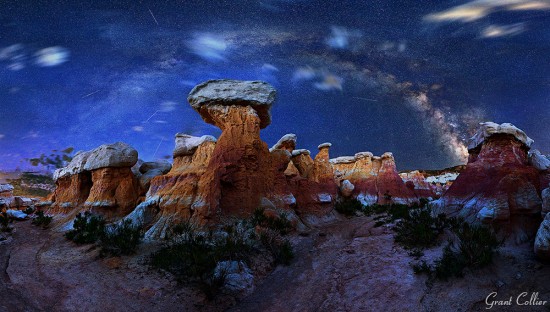
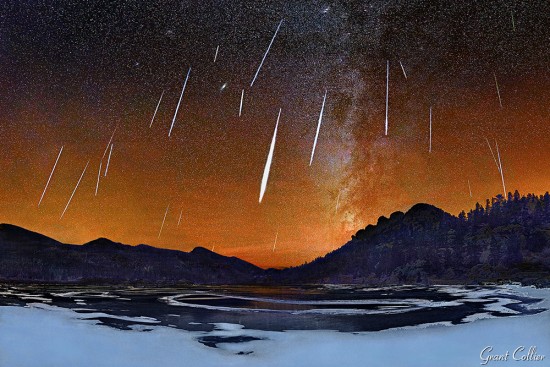
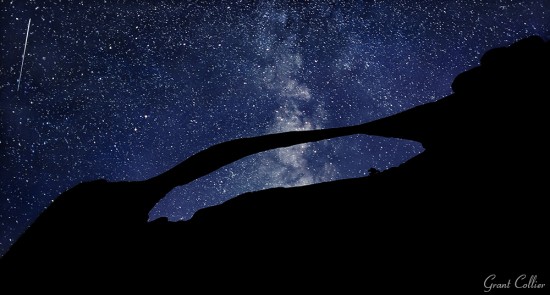
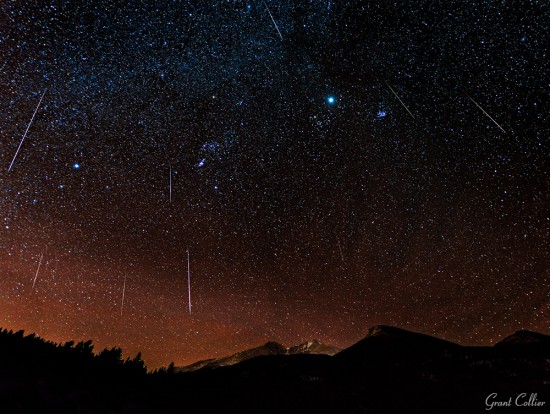








Thanks for the tips Grant. These are very helpful.
I went out last week, but only caught one meteor in a 2 1/2 hour period… hoping to try again this week during the peak tomorrow (fingers crossed!) https://plus.google.com/u/0/photos/+DwayneSchnell/albums/6181063694582842721/6181063693781686098?pid=6181063693781686098&oid=112439633897665200688
Is very good………